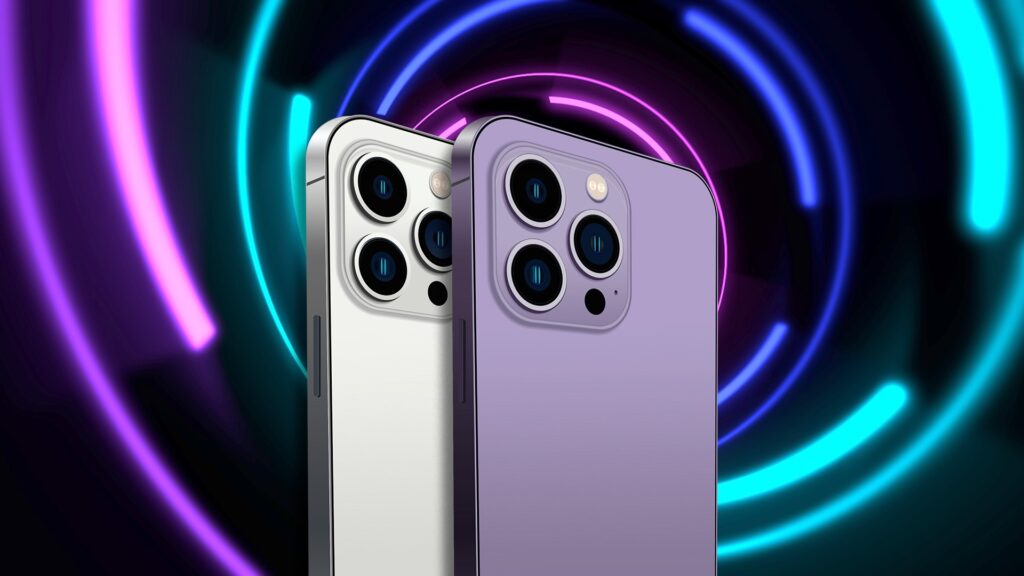Is Upgrading to the iPhone 15 Worth It Over the iPhone 14?
The arrival of the iPhone 15 for pre-order has sparked a debate among potential upgraders. This latest model boasts an array of exciting features, including a 48-megapixel camera and the introduction of USB-C connectivity.
However, it’s essential to consider that the iPhone 15 comes with a notably higher price tag compared to its predecessor. This begs the question: is the added cost justifiable? Let’s take a closer look.
“Exploring the Value of the iPhone 15 128GB Upgrade” The iPhone 15 and its Pro counterpart share some similarities with last year’s models, but they feature more robust processors and improved camera capabilities. Additionally, they have shed some weight, with the Pro versions sporting a new titanium frame, the same material used in the Mars rover, resulting in a sleeker and more lightweight design.
One notable improvement is the inclusion of USB-C support, allowing compatibility with your existing USB-C cables, although charging may be slightly slower.
However, opting for the non-Pro iPhone 15 means foregoing a few features. You won’t have access to the dynamic island feature, which displays notifications and Live Activities on your home screen. Additionally, you’ll be limited to a 60 Hz display refresh rate, an area where Apple’s phones still lag behind their competitors. Nevertheless, there are rumors of an upcoming “Ultra” model that aims to address this issue, along with offering a 2TB storage option and an 8K periscope camera.

“Performance Comparison: iPhone 15 vs. iPhone 14” At first glance, the standard iPhone 15 may not seem significantly different from the iPhone 14 in terms of design and size. However, it packs substantial performance upgrades and boasts superior cameras. Equipped with a new 48MP image sensor, it allows for high-quality, detailed photography.
Moreover, the iPhone 15 features the advanced A16 Bionic chip, typically reserved for Pro-level devices. This translates to smoother performance when streaming, swiping, and gaming.
Another noteworthy difference is the iPhone 15’s larger 6.1″ Super Retina XDR display with HDR support, providing brighter and more vibrant visuals. It also introduces Dynamic Island, ensuring that notifications and Live Activities remain prominently visible. Additionally, the iPhone 15 incorporates a USB-C port for faster charging and data transfers, along with water resistance and an aesthetic design featuring color-infused glass and aluminum.
“Enhancements in iPhone 15’s Camera Compared to iPhone 14” Apple’s iPhone 15 series introduces significant camera upgrades that were absent in the iPhone 14. These enhancements include Dynamic Island, a powerful 48MP primary camera, and USB-C support, which are especially appealing to photography enthusiasts, videographers, and those seeking a premium smartphone experience.
The 48MP primary camera in the iPhone 15 excels at capturing intricate details, a substantial improvement over the 12MP sensor in the iPhone 14. With the addition of a new telephoto lens, zoom capabilities are significantly enhanced. Furthermore, support for HEIF image formats results in smaller file sizes without compromising image quality.
In summary, the iPhone 15 offers substantial improvements that make it an attractive choice for most current users. However, those in pursuit of a more premium device may still consider the iPhone 14, which boasts an excellent telephoto camera, strong performance, and the convenience of a USB-C port—all at a lower price point than the iPhone 15. Therefore, for the majority of users, upgrading to the iPhone 15 this year appears to be a sensible decision.
“Unlocking the iPhone Storage Dilemma: iPhone 15 128GB vs. iPhone 14 128GB” Similar to its predecessors, iphone 15 128gb gia bao nhieu the iPhone 15 series lacks a microSD card slot for expandable storage. This means users must decide between investing in a compatible USB-C drive or embracing iCloud to augment their storage capacity, particularly if they engage in activities such as capturing high-resolution photos and videos, downloading media, or enjoying mobile gaming.
For most individuals, the 128 GB storage option should suffice. However, those planning to record 4K video or maintain a substantial offline media library might lean towards the 256 GB variant.
Ultimately, the ideal storage capacity for an iPhone depends on individual needs and usage patterns. If video recording takes a backseat and you predominantly stream music and movies, a 128 GB iPhone should meet your needs. Additionally, you can expand your storage through additional iCloud storage, priced at just $120 per year and shareable with family members, simplifying the task of managing your phone’s storage space.